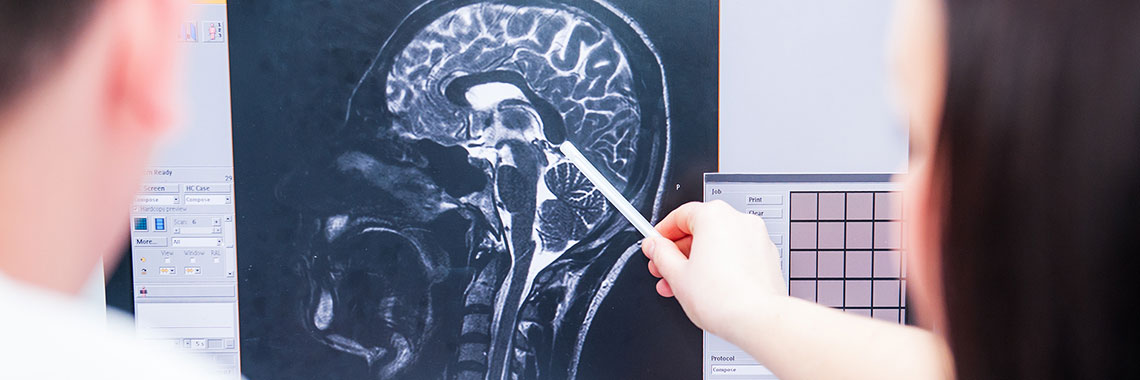
We have all heard more and more about concussion in the news lately, especially regarding athletes. The term concussion protocols for athletes returning to play after a head injury has been particularly talked about. But athletes are not the only individuals who can suffer from concussions. A concussion, also known as a mild traumatic brain injury -MTBI, is a type of brain injury that is defined as a short loss of normal brain function after a head injury. While this is commonly associated with sports injuries, it can also be a result of a blow to the head. Over 1 million brain injuries occur each year in our nation and half of these occur in children while playing recreational sports. Adults are more likely to suffer a concussion following a fall or a car accident.
The brain is protected from external injury by our cranium or skull, which provides a boney barrier to external forces. Inside of the cranium, the brain is suspended in cerebrospinal fluid, so a concussion can occur from the brain moving violently back and forth or from hitting the side of the skull. This rapid movement can stretch and damage brain tissue which causes changes that can interrupt normal brain function. While concussions are the mildest form of traumatic brain injury, they are not to be taken lightly.
A concussion is not visible on from the outside and it cannot be detected with standard imaging, such as CAT scan or MRI. A diagnosis is made based on signs and symptoms. These signs and symptoms can be very subtle initially, and at times don’t arise until several hours to days after the injury. Symptoms can include a headache, loss of memory, blurry vision, confusion or feeling as if a fog, nausea, vomiting, dizziness, slurred speech, unsteady gait, or fatigue. Often the individual doesn’t recall the event that caused the injury. Delayed symptoms may include difficulty with concentration, sleep disturbance, personality changes and irritability, sensitivity to light and noises, and psychological adjustment problems.
A single concussion is known to increase the risk of a second concussion, especially if the symptoms of the initial injury have not resolved. The second injury may have a smaller impact yet cause the same symptom severity. Therefore, it is important to identify a concussion as soon as possible so the individual may avoid activities that put him at risk for a second injury.
Treatment of concussion or MTBI includes cognitive and physical rest as well as monitoring for worsening of the condition. The time to full recovery from MTBI will vary for each individual, but most will make a full recovery.
There are many ways to reduce the chances of sustaining an MTBI, including using seat belts, wearing helmets during recreational activities such as bike riding, skateboarding, skiing and contact sports. Modifying the environment for seniors by removing tripping hazards, such as throw rugs, and improving lighting throughout the home can prevent falls that lead to MTBI. For more information regarding concussion and MTBI go to www.cdc.gov/headsup.





